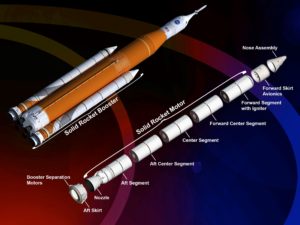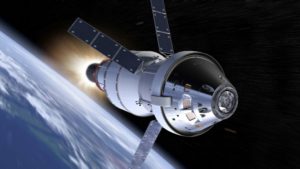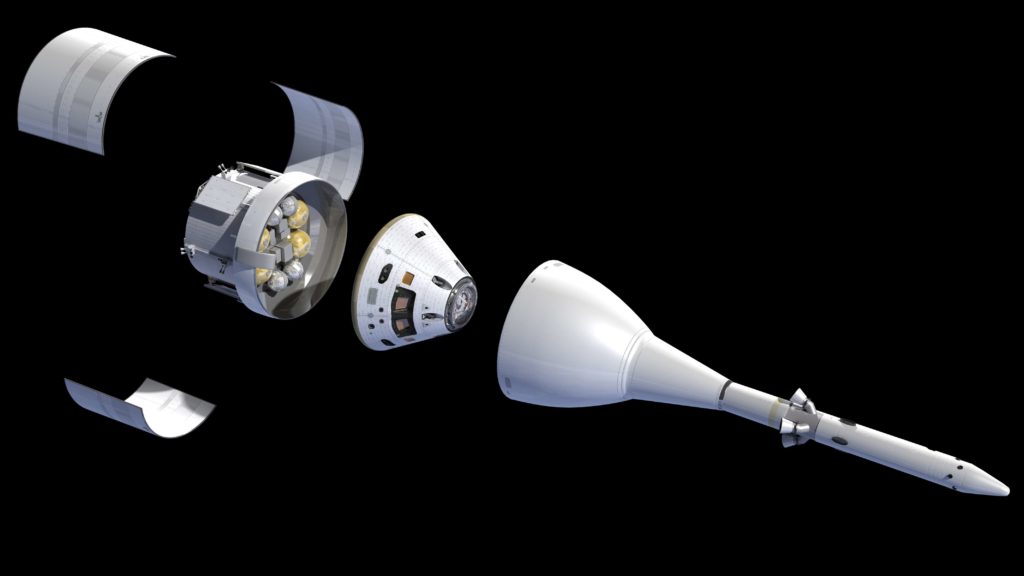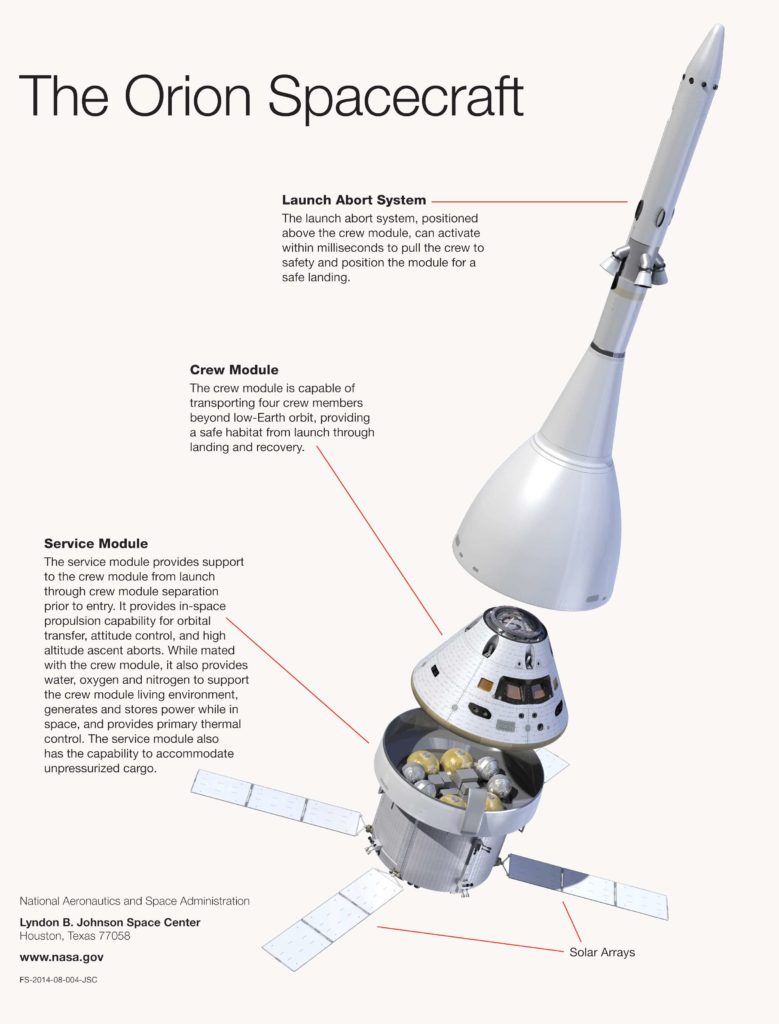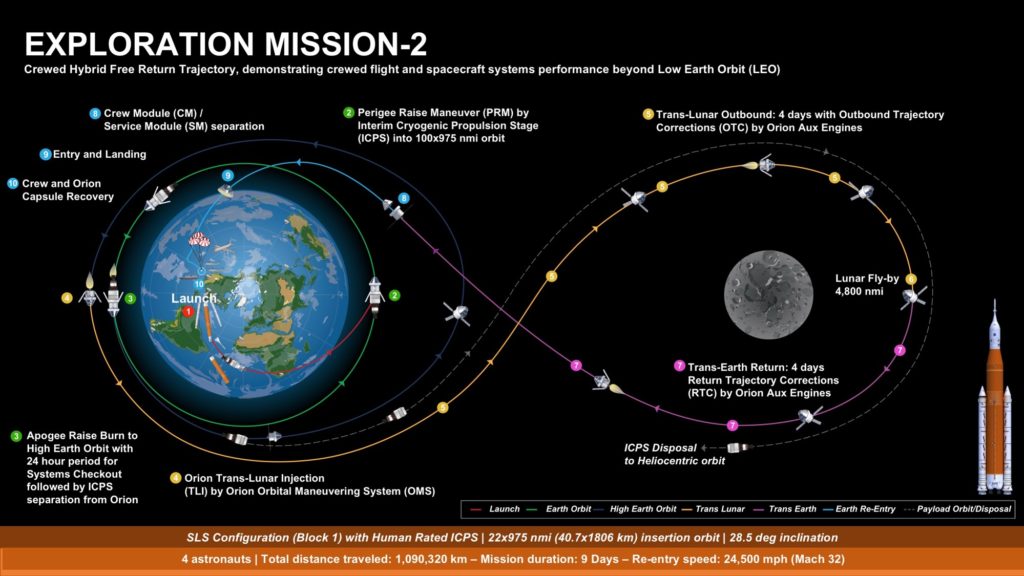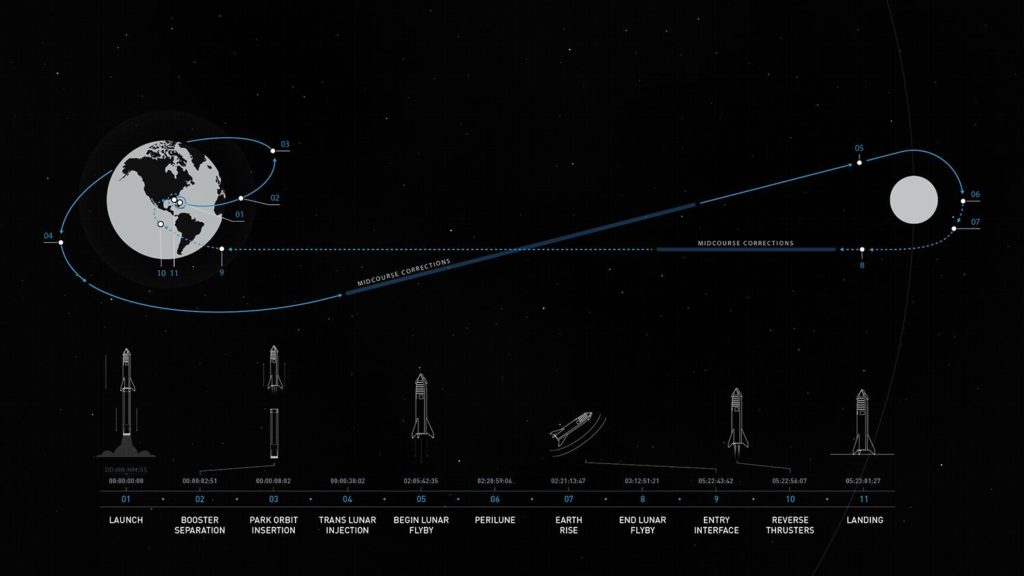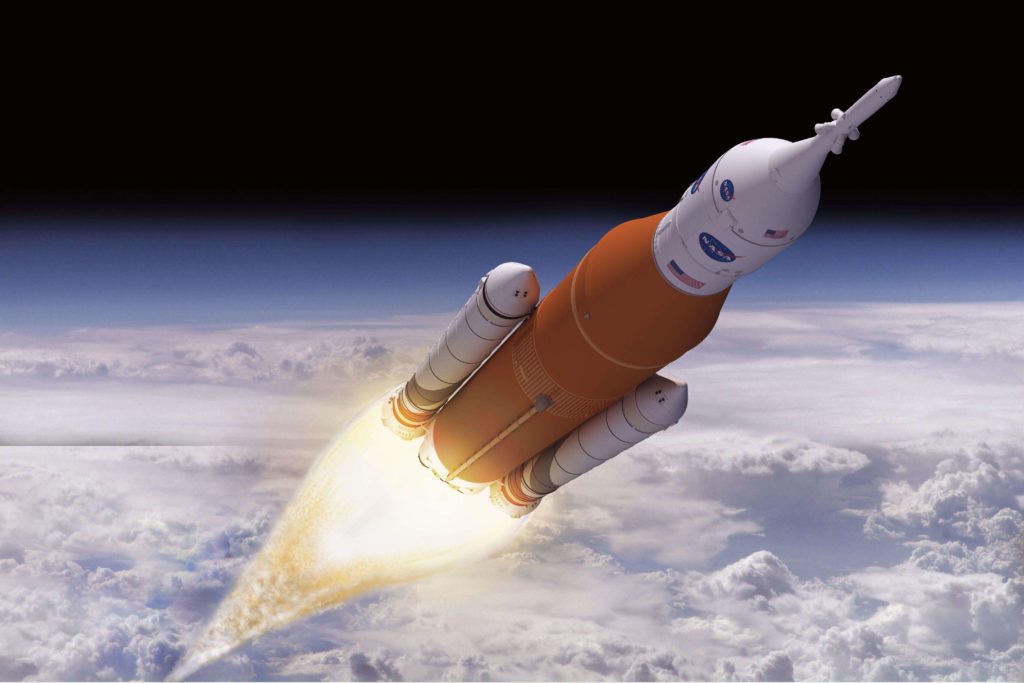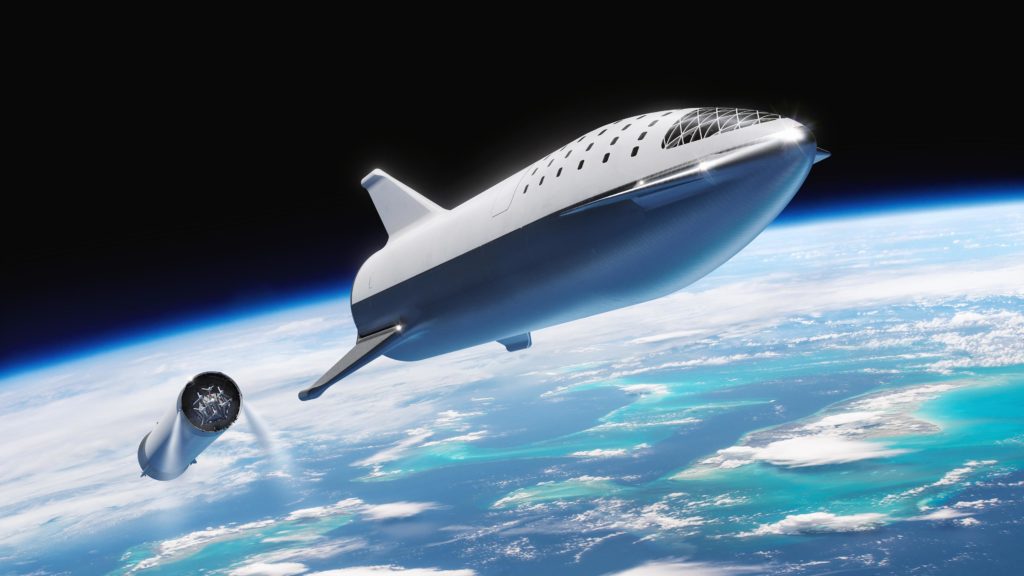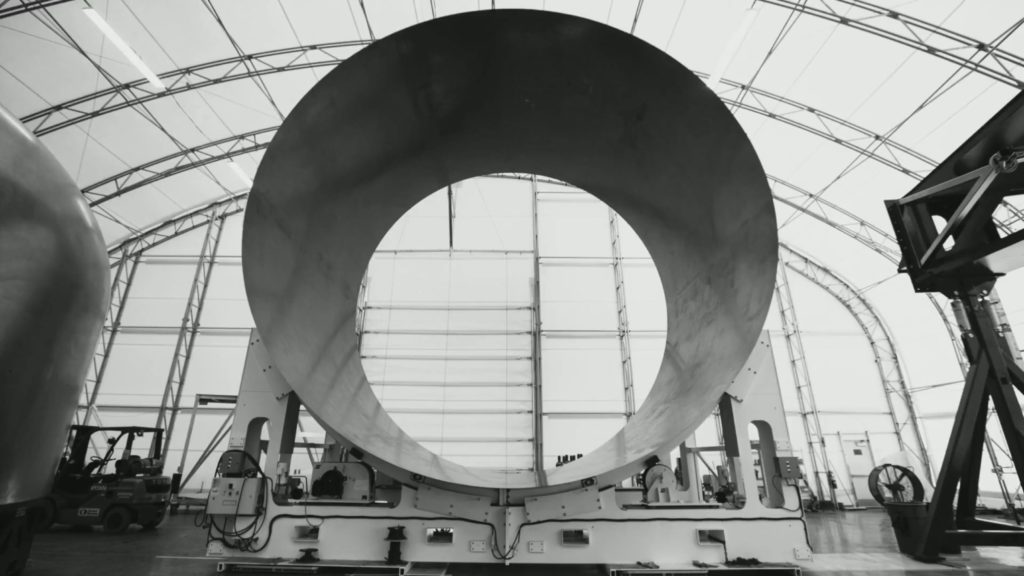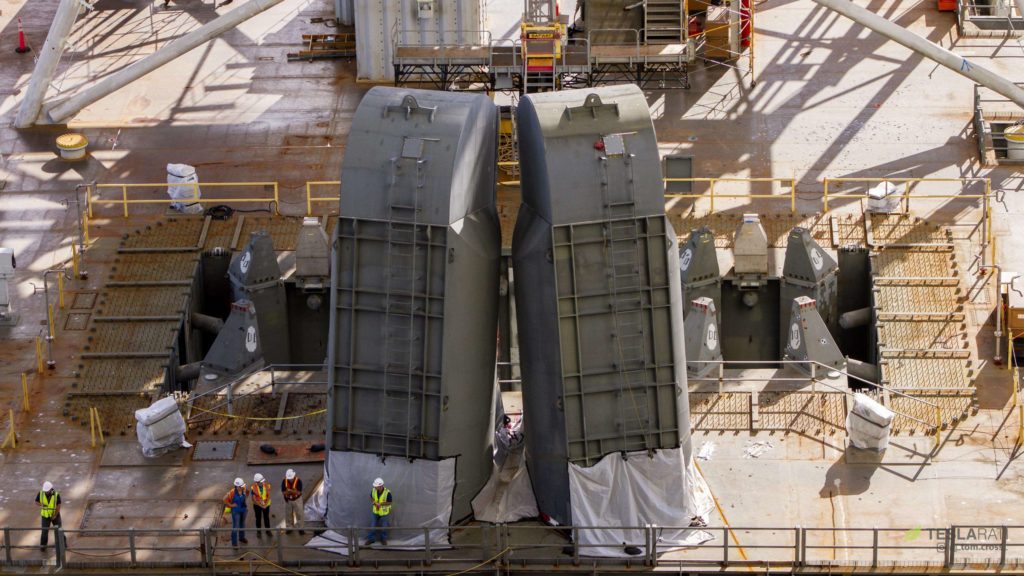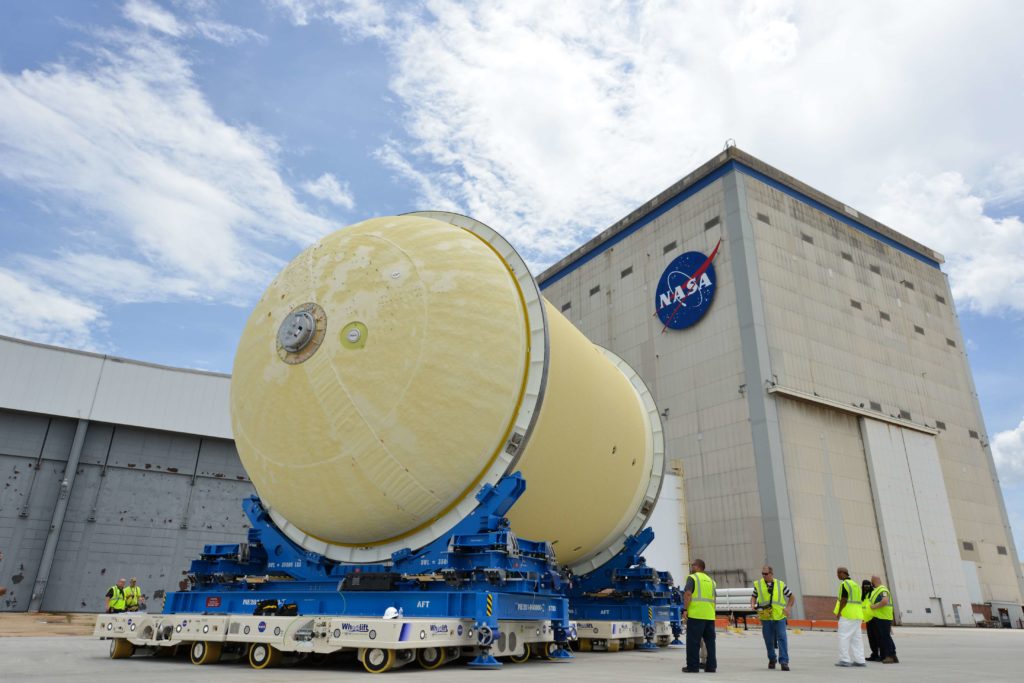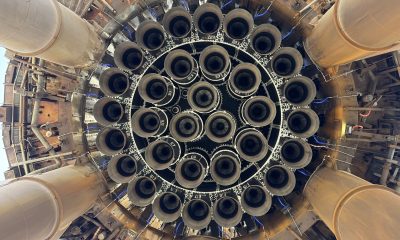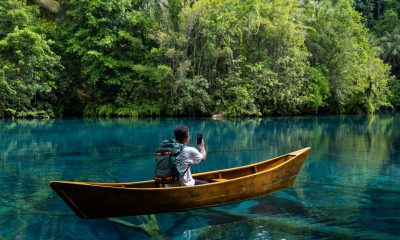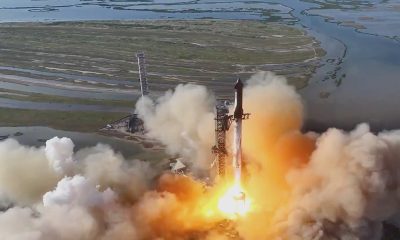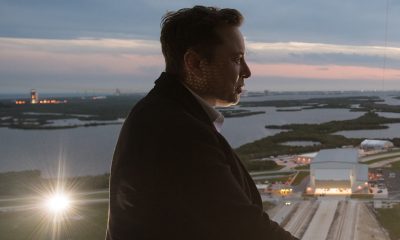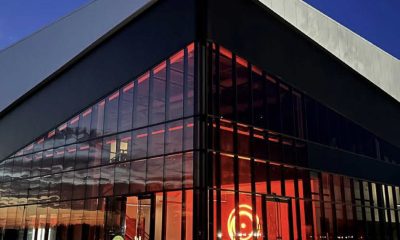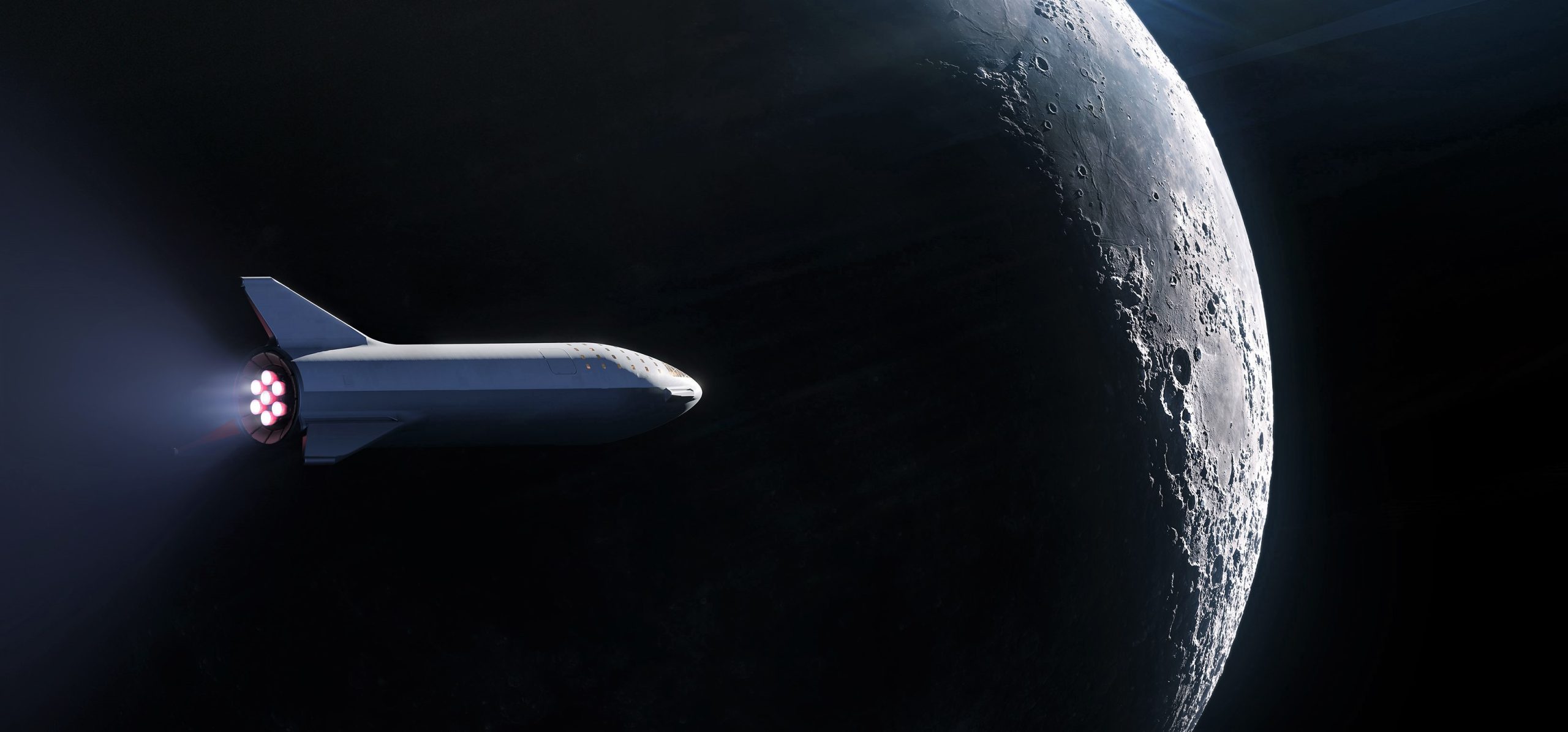
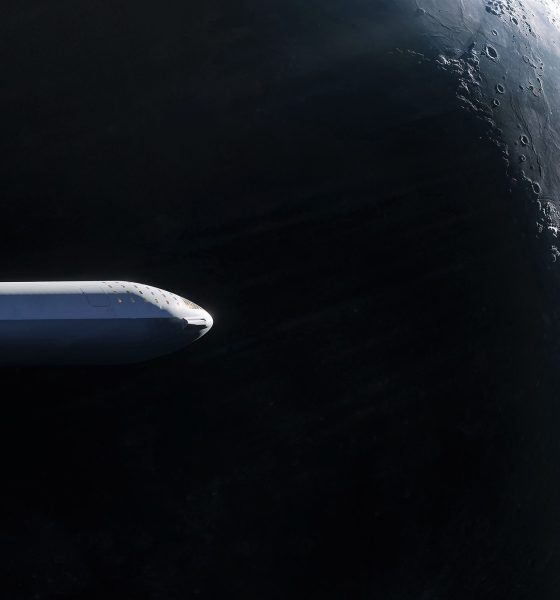
News
SpaceX and NASA accidentally set the stage for a new race to the Moon
Almost entirely driven by chance, SpaceX and NASA may soon find themselves in an unintentional race to return humans to the Moon for the first time in half a century.
Both entities – SpaceX with its next-generation BFR and NASA with its Shuttle-derived SLS – are tentatively targeting 2023 for their similar circumlunar voyages, in which NASA astronauts and private individuals could theoretically travel around the Moon within just months of each other, showcasing two utterly dissimilar approaches to space exploration.
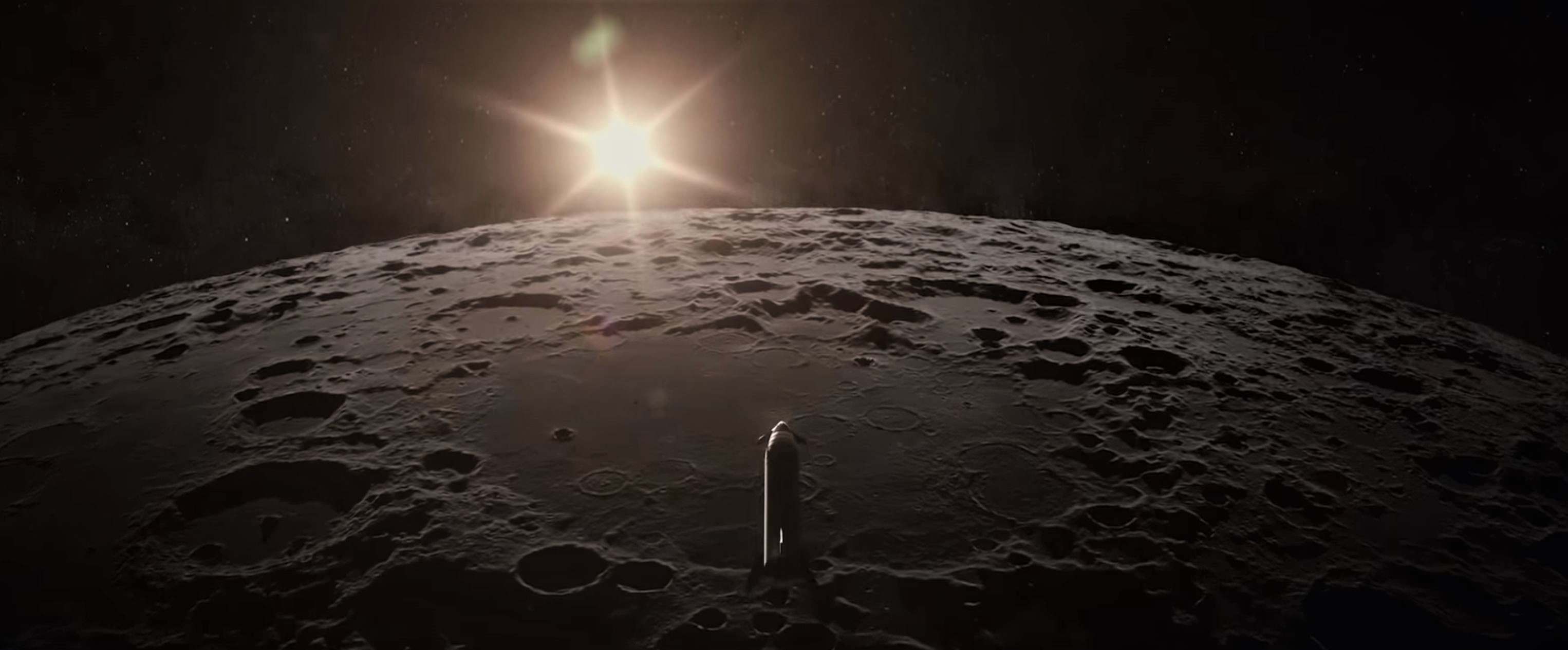
Over the course of no fewer than seven years of development, NASA’s SLS rocket and Orion spacecraft have run into an unrelenting barrage of issues, effectively delaying the system’s launch debut at a rate equivalent to or even faster than the passage of time itself. In other words, every month recently spent working on the vehicle seems to have reliably corresponded with at least an additional month of delays for the launch system.
Why these incessant delays continue to occur is an entire story in itself and demands the acknowledgment of some uncomfortable and inconvenient realities about the state of NASA’s human spaceflight program in the 21st century, but that is a story is for another time.
- SLS. (NASA)
- NASA’s Orion spacecraft, European Service Module, and ICPS upper stage. (NASA)
A different kind of paper rocket
Returning to SLS, a brief overview is in order to properly contextualize what exactly the rocket and spacecraft are and what exactly their development has cost up to now. SLS is comprised of four major hardware segments.
- The Core Stage: A massive liquid hydrogen/liquid oxygen rocket booster, this section is essentially a lengthened version of the retired Space Shuttle’s familiar orange propellant tank, while the stage’s four engines are quite literally taken from stores of mothballed Space Shuttle hardware and will be ingloriously expended after each launch (SLS is 100% expendable).
- Solid Rocket Boosters (SRBs): Minimally modified copies of the SRBs used during the Space Shuttle program, SLS’ SRBs have slightly more solid propellant and have had all hints of reusability removed, whereas Space Shuttle boosters deployed parachutes and were reused after landing in the Atlantic Ocean.
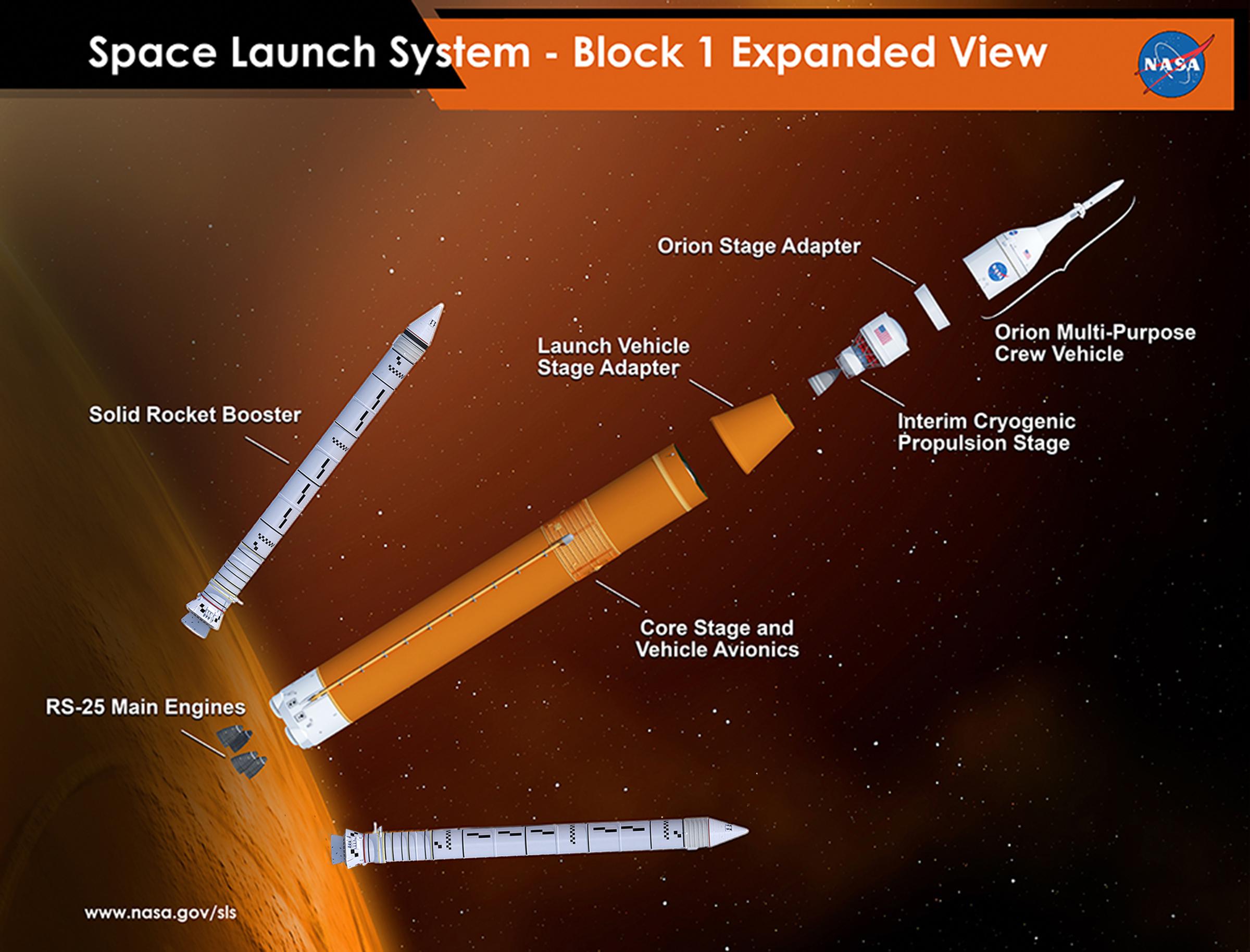
- The Upper Stage (Interim Cryogenic Propulsion System, ICPS): ICPS is a slightly modified version of ULA’s off-the-shelf Delta IV upper stage.
- The Orion spacecraft and European Service Module: Borrowing heavily from the Apollo Command and Service Modules that took humanity to the Moon in the 1960s and 70s, Orion has been in funded development in one form or another for more than 12 years, with just one partial flight-test to call its own. Orion’s development has cost the U.S. approximately $16 billion since 2006, with another $4-6 billion expected between now and 2023, a sum that doesn’t account for the costs of production and operations once development is complete.
- The Orion spacecraft and ESM. (NASA)
For the SLS core stage and SRBs, a generous bottom-rung estimate indicates that $14 billion has been spent on the rocket itself between 2011 and 2018, not including many billions more spent refurbishing and modifying the rocket’s aging Saturn and Shuttle-derived launch infrastructure at Kennedy Space Center. Of the many distressing patterns that appear in the above descriptions of SLS hardware, most notable is a near-obsessive dependence upon “heritage” hardware that has already been designed and tested – in some cases even manufactured.
Despite cobbling together or reusing as many mature components, facilities, and workforces as possible and relying on slightly-modified commercial hardware at every turn, SLS and Orion will somehow end up costing the United States more than $30 billion dollars before it has completed a single full launch; potentially rising beyond $40 billion by the time the system is ready to launch NASA astronauts.
Moonward bound
SLS’ first crewed mission, known as Exploratory Mission-2 (EM-2), brings us to the title – NASA’s mission planning has settled on sending a crew of four astronauts on what is known as a Free Lunar Return trajectory in the Orion spacecraft, essentially a single flyby of the Moon. Official NASA statements appear to be sending mixed messages on the schedule for EM-2’s launch, with September 2018 presentations indicating 2022 while a late-August blog post suggests that the crewed circumlunar mission is targeting launch in 2023.
As it happens, SpaceX announced its own plans for a (private) crewed circumlunar voyage less than two weeks ago. Funded in large part by Japanese billionaire Yasuka Maezawa, SpaceX’s hopes to send 10+ people to the Moon on its next-generation BFR launch vehicle, comprised of a fully-reusable booster and spaceship. Deemed Dear Moon by Maezawa, SpaceX is targeting an extremely ambitious launch deadline sometime in 2023, although CEO Elon Musk frankly noted that hitting that 2023 window would require all aspects of BFR booster and spaceship development to proceed flawlessly over the next several years.
Compared to the 10+ years and $30+ billion of development SLS and Orion will have taken before their first full launch, SpaceX is targeting the first orbital BFR test flights as early as 2020 or 2021, self-admittedly optimistic deadlines that will likely slip. Still, betting against SpaceX completing its first BFR launch sometime in the early to mid-2020s for something approximating Musk’s $2-10 billion development cost seems a risky move in the context of SpaceX’s undeniable track record of proving the old-guard wrong.
- NASA’s EM-2 circumlunar voyage. (NASA)
- SpaceX’s own circumlunar trajectory, nearly identical. (SpaceX)
- SLS Block 1. (NASA)
- BFR’s spaceship and booster (now Starship and Super Heavy) separate in a mid-2018 render of the vehicle. (SpaceX)
It must be noted that the apparent alignment of both SpaceX and NASA’s first crewed circumlunar missions with new rockets and spacecraft is a fluke of chance, and the fact that it may or may not take the shape of a second race to the Moon – pitting two dramatically different ideologies and organizational approaches against each other – is purely coincidental.
However, despite the undeniable fact that NASA and SpaceX are deeply and cooperatively involved through Crew and Cargo Dragon and despite Musk’s genuine affirmations of support and admiration for the space agency, it can be almost guaranteed that the world will look on in the 2020s with the same underlying emotions and motivations that were globally present during the Apollo Program. Rather than a battle of economic and nationalistic ideologies, the New Space Race of the 2020s will pit two (publicly) amicable private and public entities against each other at the same time as they work hand-in-hand to deliver crew and cargo to the International Space Station.
- An overview of BFR’s booster and spaceship, now known as Super Heavy and Starship. (SpaceX)
- SpaceX has already completed the first of many carbon-composite sections of its prototype spaceship. (SpaceX)
- SLS’ movable launch pad is very slowly being prepared for a 2020/2021 debut. (Tom Cross)
- SLS undoubtedly has several steps up on BFR in terms of volume of hardware in work, although target launch dates are quite similar for both rockets. (NASA)
Critically, this new “race” will be fairly illusory. Thanks to the fact that the new goal of human spaceflight appears to be the sustainable exploration of the solar system, there will inherently be no Apollo-style finish line for any one company or country or agency to cross. Rather than the Apollo Program’s shortsighted economic motivations and its consequentially abrupt demise, the end-result of this new age of competition will be the establishment of humanity as a (deep) spacefaring species, be it a temporary burst of effort or a permanent human condition.
Buckle up.
For prompt updates, on-the-ground perspectives, and unique glimpses of SpaceX’s rocket recovery fleet check out our brand new LaunchPad and LandingZone newsletters!
Cybertruck
Tesla gives big hint that it will build Cyber SUV, smaller Cybertruck
“Those are definitely things we’ve considered. Wait & see is probably the best way I can answer that. We’re working on so many innovative & fun things.”
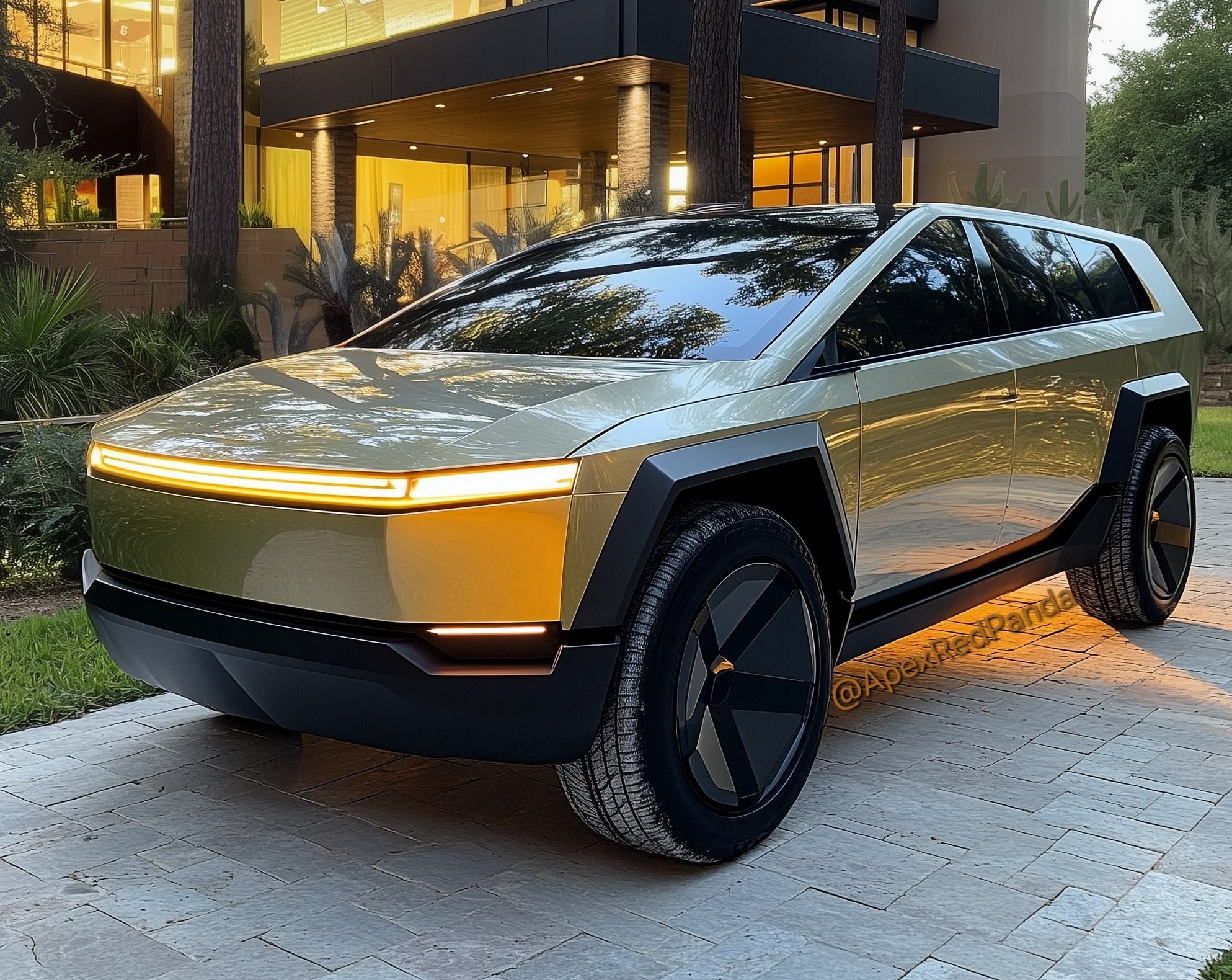
Tesla appears to have given a significant hint that it plans to build two highly anticipated and requested vehicles: the Cyber SUV and a smaller Cybertruck. This potentially indicates that two new cars could be added to the lineup soon.
For some time, Tesla fans have been requesting two things: a true SUV and a more compact Cybertruck. The SUV has been on the minds of fans and owners for some time, as Tesla does not currently build a full-size SUV that competes with vehicles like the Chevrolet Tahoe or Ford Expedition.
Tesla’s longer Model Y did not scale back requests for this vehicle type from fans
Meanwhile, the compact and smaller Cybertruck has been teased for years, especially since the all-electric pickup seems to be a viable option for international markets; however, its size does not seem ideal for the tight roadways in other regions.
Lately, there have been more hints than ever that Tesla is finally considering these two vehicles. It’s all but confirmed, but Tesla has always left breadcrumbs for fans to find and speculate over.
In an interview with Bloomberg, Tesla Chief Designer Franz von Holzhausen said that the company has considered these two vehicles for its lineup, but he would not give a definitive “yes” or “no” regarding their development:
“Those are definitely things we’ve considered. Wait & see is probably the best way I can answer that. We’re working on so many innovative & fun things.”
Recently, the speculation regarding the Cyber SUV has been well-fueled, as a recent promotional video Tesla released seemed to show a mock-up design hiding in plain sight:
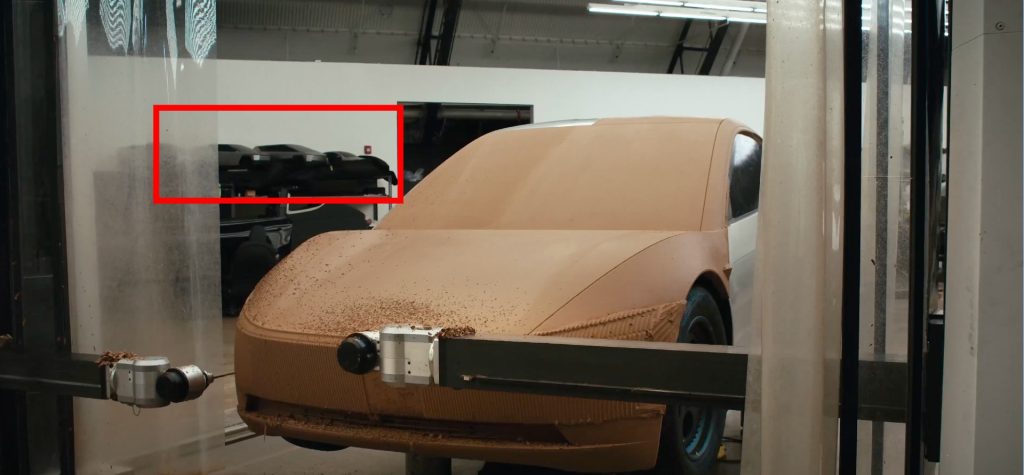
Credit: Tesla
Interestingly, Tesla said in a regulatory filing early this year that it would not adopt the Cybertruck’s stainless steel exoskeleton for new vehicles. However, it could still launch a design inspired by the Cybertruck, but using different materials.
Very, very interesting observation here.
Tesla said in its Q4 Shareholder Deck that it would not utilize the Stainless Steel Exoskeleton in future vehicles.
Fans have been calling for a full-size SUV in the Tesla lineup.
It would probably do very well. Cost has to be right. https://t.co/VryCVQxEC9 pic.twitter.com/APxeYmF6ew
— TESLARATI (@Teslarati) September 1, 2025
As far as the more compact Cybertruck design, this would enable fans in Europe and Asia to purchase the all-electric pickup.
There have been concerns from a regulatory perspective in some countries outside of North America, as the sheer size and sharp edges have caused some concern for other governments:
Tesla Cybertruck gets pushback in Europe, increasing need for ‘international’ version
However, back in 2019, just after the Cybertruck’s unveiling, CEO Elon Musk admitted that there was a place for a smaller version.
News
Tesla Robotaxi is headed to a new U.S. state following latest approval
“Only a trained employee, contractor, or other person authorized by the company can operate or monitor the vehicles.”
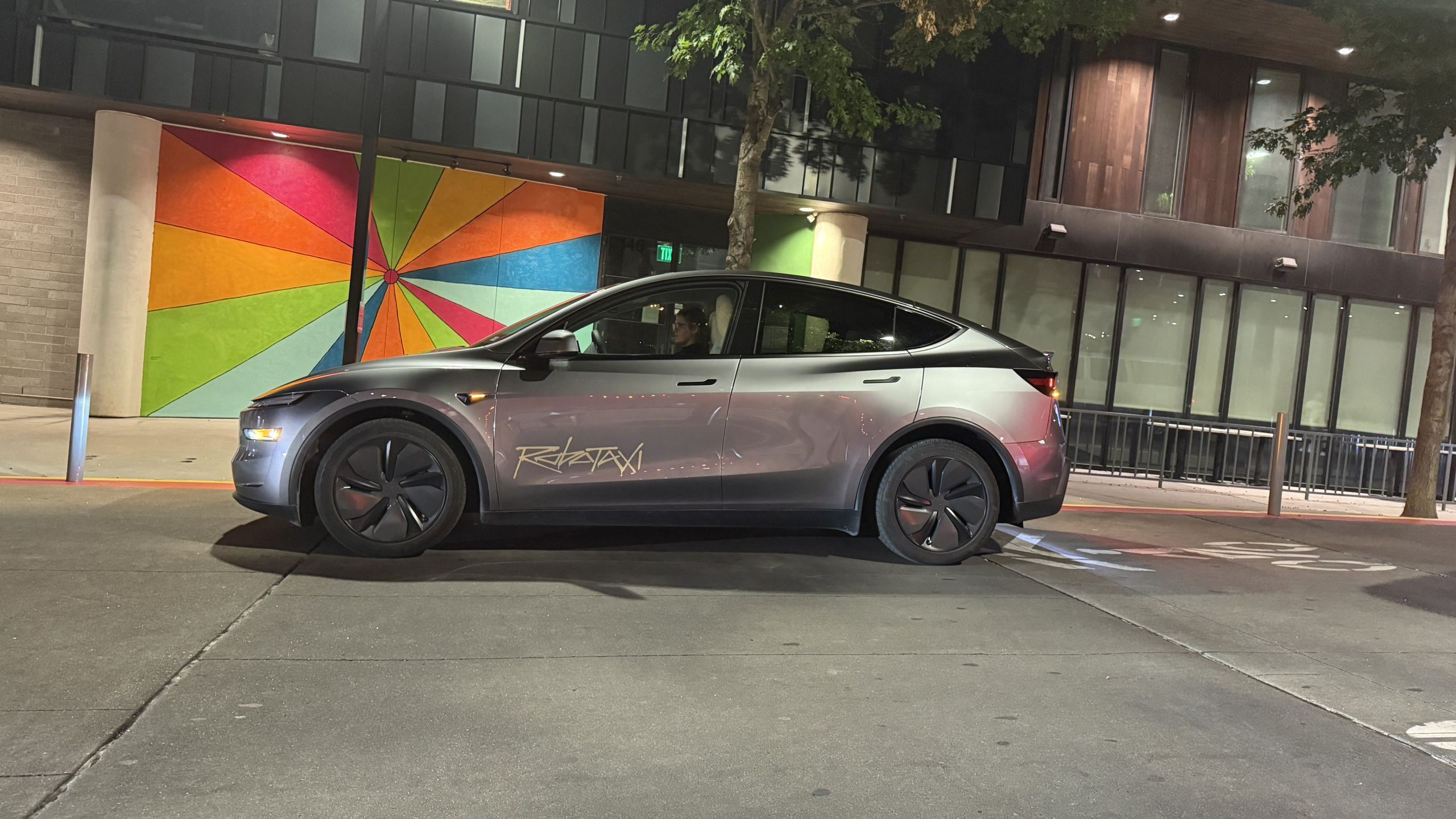
Tesla Robotaxi is headed to a new U.S. state following its latest approval, which was revealed on Friday night.
Tesla has been operating its Robotaxi platform in Texas and California, with Austin being the first city where the company could test a ride-hailing platform without anyone in the driver’s seat.
First launching in Austin in late June, Tesla’s focus has been expanding its service area, its fleet of Robotaxi vehicles, and its rider population, which has grown most recently due to its public launch.
However, Tesla is also filing applications in states where these autonomous driving programs can operate, aiming to expand to all 50 states eventually. CEO Elon Musk said earlier this year that the company should be able to offer Robotaxi rides to roughly half of the U.S. population.
Alongside Texas and California, Tesla recently gained permission to test its Robotaxi in Nevada, marking the third state where it had some form of regulatory permission to perform rides using an unreleased version of the Full Self-Driving suite.
Tesla adjusts one key detail of Robotaxi operations in Austin
Now, Tesla has gained another approval in a new state, its fourth, marking a significant step in its expansion across the U.S.
In Arizona, Tesla gained regulatory approval to begin testing autonomous vehicles on public roads.
BREAKING: Tesla has officially received approval from the Arizona Department of Transportation to start testing autonomous vehicles on public roads.
Today, I confirmed directly with the Arizona DOT that @Tesla has met requirements to begin testing its autonomous vehicles in… pic.twitter.com/kjgFnKEcJF
— Sawyer Merritt (@SawyerMerritt) September 20, 2025
The vehicles in Austin and the Bay Area of California both use what Tesla has been referring to as “Safety Monitors” in the cars. During city operation in Texas, the Safety Monitor sits in the passenger’s seat. When the route takes the car on the highway, the Safety Monitor jumps into the driver’s seat.
Tesla explains why Robotaxis now have safety monitors in the driver’s seat
In California, the Safety Monitor is always in the driver’s seat.
In Arizona, Tesla will also utilize what a communication said was “Safety Drivers,” insinuating that the monitor would be in the driver’s seat. However, another line in the email states:
“Only a trained employee, contractor, or other person authorized by the company can operate or monitor the vehicles.”
It sounds as if there is the potential for the Safety Monitor to be in either seat, much like Tesla’s process in Austin. However, this is currently unconfirmed.
The new approval marks a drastic step forward for Tesla as it has received two new approvals in just two weeks. Regulatory hurdles seem to still be the biggest bottleneck for Tesla in terms of gaining permissions to operate in new states, but things seem to be moving along pretty well so far.
Elon Musk
Tesla CEO Elon Musk says this common issue is ‘major area of focus’
Tesla, like any other company, goes through hardware issues with its vehicles, but some are more publicized than others.

Elon Musk said this afternoon on X that a commonly reported issue with the Tesla vehicles is a “major area of focus” for the company.
Tesla, like any other company, goes through hardware issues with its vehicles, but some are more publicized than others.
However, the simple yet annoying issues that owners encounter through thousands of miles of driving do not receive as much attention, even though they are likely more pertinent and frequently encountered by owners.
One of those problems is with the central windshield Full Self-Driving camera, which sits inside a housing at the top of the glass, enabling Tesla Vision to have an uninterrupted view of the traffic and surroundings ahead of the vehicle.
Many owners have reported that their vehicles alert them when Full Self-Driving is unavailable due to an obstruction with this camera. Commonly, it is caused by a buildup of condensation, which creates a haze on the camera and obstructs its view.
Tesla suggests a quick cleaning of the housing and cameras, which resolves the problem. Still, owners are not necessarily ecstatic about having to do this themselves.
Tesla developing more comprehensive Cybertruck camera cleaning system
Musk says that Tesla is attempting to fix the issue, and said in response to one owner who performed the maintenance that it was a “major area of focus” for the company:
This is a major area of focus
— Elon Musk (@elonmusk) September 19, 2025
While many were enthusiastic about the potential fix, but some complained that their cars had been in for service many times for the issue, inhibiting their ability to utilize FSD and truly enjoy the full experience of owning a Tesla.
Constantly fighting mine. Every single time I use FSD it shows me an image and tells me the camera is dirty and needs to be cleaned and yet it’s not dirty and has been cleaned. I’ve had it into Tesla six times. Had the camera even replaced. Still happening. It’s frustrating
— Stop Lying (@Michael46116047) September 19, 2025
It will likely be a hardware fix that will be implemented through a service appointment, but knowing Tesla, they could have something up their sleeve through a software update to resolve the issue.
-
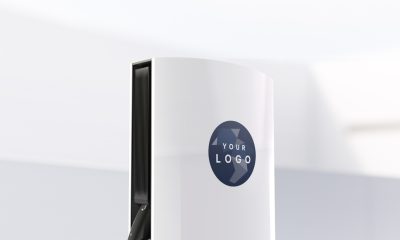
 News2 weeks ago
News2 weeks agoTesla launches new Supercharger program that business owners will love
-
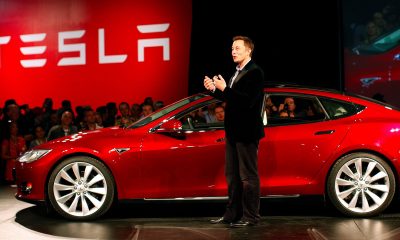
 Elon Musk2 weeks ago
Elon Musk2 weeks agoTesla Board takes firm stance on Elon Musk’s political involvement in pay package proxy
-
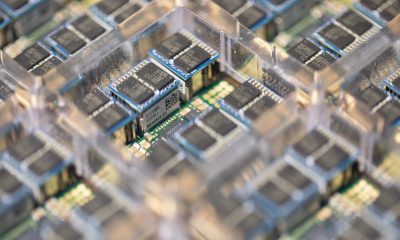
 Elon Musk2 weeks ago
Elon Musk2 weeks agoElon Musk is setting high expectations for Tesla AI5 and AI6 chips
-
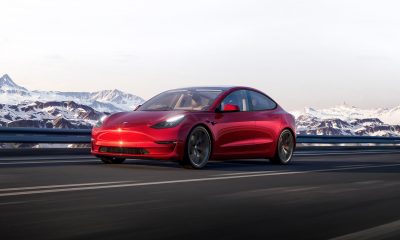
 News1 week ago
News1 week agoTesla is improving this critical feature in older vehicles
-
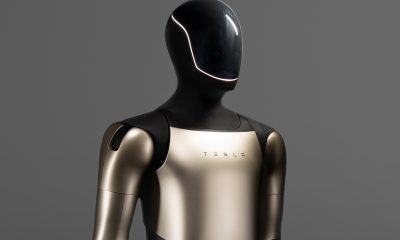
 Elon Musk2 weeks ago
Elon Musk2 weeks agoElon Musk confirms Tesla has never shown Optimus V3 design yet
-
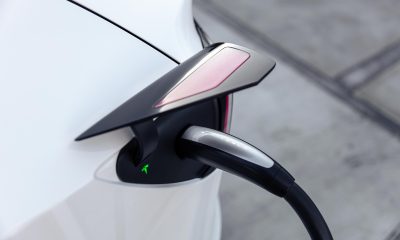
 News2 weeks ago
News2 weeks agoTesla launches MultiPass to simplify charging at non-Tesla stations
-
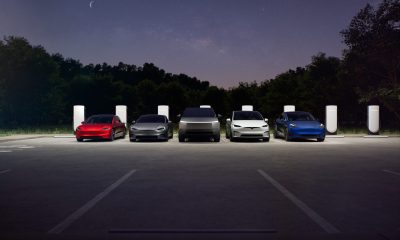
 News1 week ago
News1 week agoTesla is bailing out Canadian automakers once again: here’s how
-
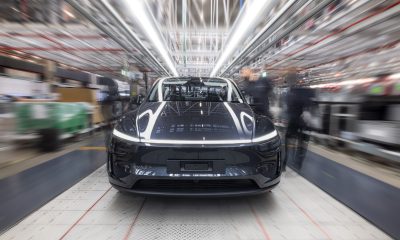
 Investor's Corner1 week ago
Investor's Corner1 week agoTesla bear turns bullish for two reasons as stock continues boost

